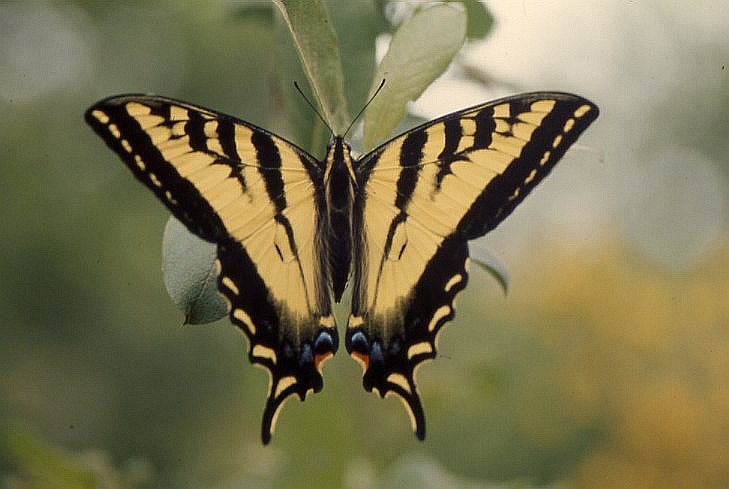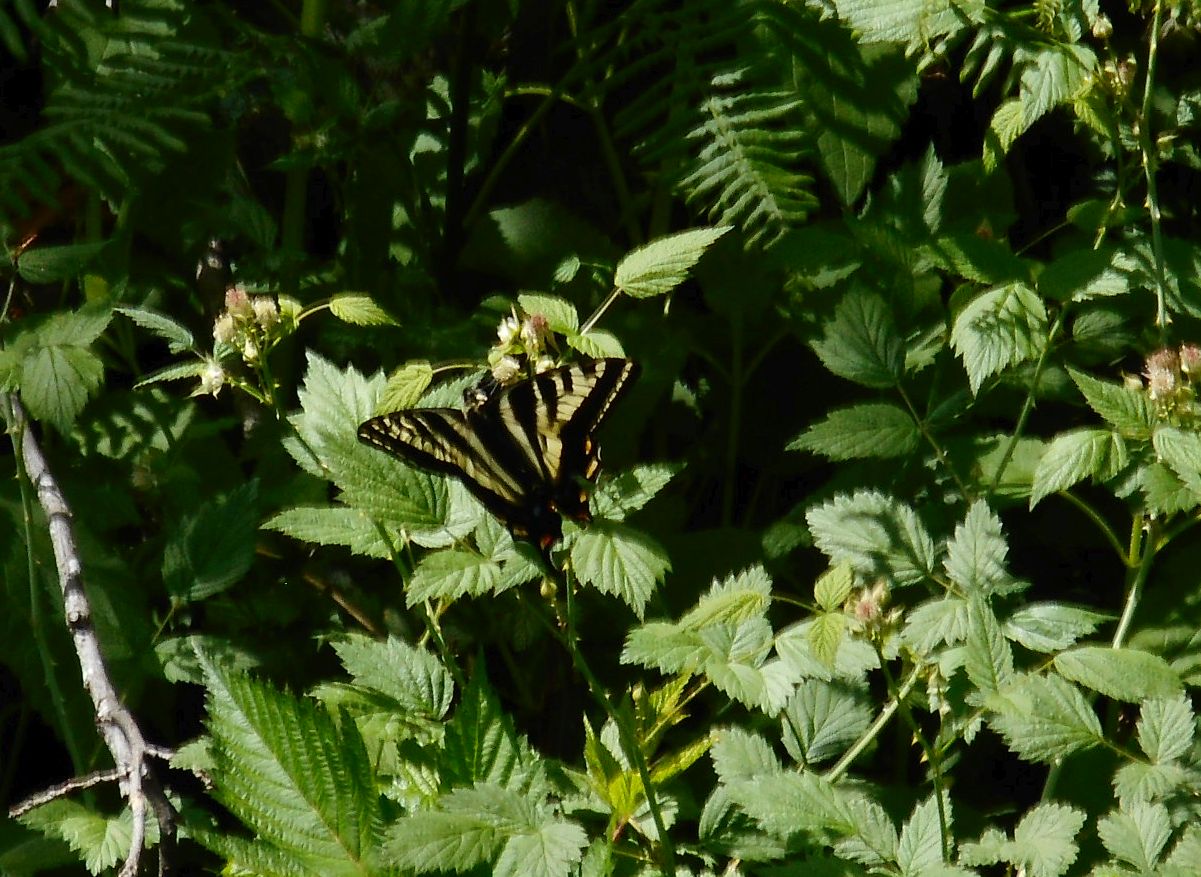October 4
2018 October 4
Jeremy Tatum writes: Now that this site is not quite as busy as it was in mid-summer, here’s a leisurely opportunity to think about tiger swallowtail identification. It should be easy: The background colour of the Western Tiger Swallowtail is yellow. That of the Pale Tiger Swallowtail is white. Right? My problem is that sometimes I can’t be sure whether the colour I’m seeing in yellow or white. Perhaps the yellow of a Western has become faded with time, or something like that.
Here, then, are two additional clues:


Western Tiger Swallowtail
Western Tiger Swallowtail
- The yellow and black tiger stripes at the leading edge of the forewing are approximately equal in width.
- The crescent-shaped spot at the base of the long hindwing tail is yellow.


Pale Tiger Swallowtail
Pale Tiger Swallowtail
1. The black tiger stripes at the leading edge of the forewing are broader than the white stripes.
2. The crescent-shaped spot at the base of the long hindwing tail is mostly orange (with maybe a little white at its tip). (Thanks to Mike Yip, who drew my attention to this feature.
What brought this up is that I was recently perusing some past Invert Alerts, when I came across the following picture by Kirsten Mills, May 27, which I had identified and labelled as a Western Tiger Swallowtail.


Kirsten’s photograph
Well, maybe the background colour looks slightly yellowish, but from the above criteria you can see clearly that I had misidentified it (apologies to Kirsten!), and it is in fact a Pale Tiger Swallowtail. I have now relabelled it as such.
I do not know of any feature by which I can distinguish between the caterpillars of the two species, other than foodplant, which is usually willow for the Western and alder for the Pale.
Do they ever hybridize? Are there some individuals that we cannot identify confidently, even if we try to use the above two features? Let’s keep a look-out next summer.
Of course there are other species of tiger swallowtail, such as Canadian and Eastern Tiger Swallowtails, and at the moment I don’t know how to identify them reliably. Presumably they don’t occur on Vancouver Island – but who knows? Let’s keep our eyes open!
Another complication: As with most other organisms, there have been name changes over the years. I am not sure why some recent authors have chosen to omit the word “Tiger” from Pale Tiger Swallowtail, and call it just the Pale Swallowtail. Maybe because real tigers aren’t white? But the Pale one is obviously one of the tiger swallowtail group (subgenus Pterourus); the omission of “Tiger” somehow suggests that it should be set apart and doesn’t belong to this group. That is why I usually prefer to retain the “Tiger”.
